Effect of Fasudil on remyelination following cuprizone-induced demyelination
- PMID: 31124292
- PMCID: PMC6930827
- DOI: 10.1111/cns.13154
Effect of Fasudil on remyelination following cuprizone-induced demyelination
Retraction in
-
Retraction: Effect of Fasudil on remyelination following cuprizone-induced demyelination.CNS Neurosci Ther. 2020 Jul;26(7):778. doi: 10.1111/cns.13393. Epub 2020 May 27. CNS Neurosci Ther. 2020. PMID: 32462797 Free PMC article.
Abstract
Background: Multiple sclerosis is characterized by demyelination/remyelination, neuroinflammation, and neurodegeneration. Cuprizone (CPZ)-induced toxic demyelination is an experimental animal model commonly used to study demyelination and remyelination in the central nervous system. Fasudil is one of the most thoroughly studied Rho kinase inhibitors.
Methods: Following CPZ exposure, the degree of demyelination in the brain of male C57BL/6 mice was assessed by Luxol fast blue, Black Gold II, myelin basic protein immunofluorescent staining, and Western blot. The effect of Fasudil on behavioral change was determined using elevated plus maze test and pole test. The possible mechanisms of Fasudil action were examined by immunohistochemistry, flow cytometry, ELISA, and dot blot.
Results: Fasudil improved behavioral abnormalities, inhibited microglia-mediated neuroinflammation, and promoted astrocyte-derived nerve growth factor and ciliary neurotrophic factor, which should contribute to protection and regeneration of oligodendrocytes. In addition, Fasudil inhibited the production of myelin oligodendrocyte glycoprotein antibody and the infiltration of peripheral CD4+ T cells and CD68+ macrophages, which appears to be related to the integrity of the blood-brain barrier.
Conclusion: These results provide evidence for the therapeutic potential of Fasudil in CPZ-induced demyelination. However, how Fasudil acts on microglia, astrocytes, and immune cells remains to be further explored.
Keywords: Fasudil; Rho kinase; cuprizone-induced demyelination; remyelination.
© 2019 The Authors. CNS Neuroscience & Therapeutics Published by John Wiley & Sons Ltd.
Conflict of interest statement
The authors declare no financial or commercial conflict of interest.
Figures
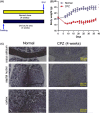
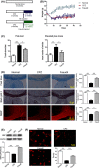
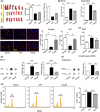
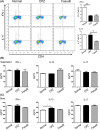

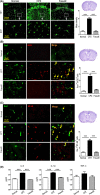
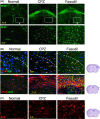
Similar articles
-
Hydroxyfasudil alleviates demyelination through the inhibition of MOG antibody and microglia activation in cuprizone mouse model.Clin Immunol. 2019 Apr;201:35-47. doi: 10.1016/j.clim.2019.01.006. Epub 2019 Jan 17. Clin Immunol. 2019. Retraction in: Clin Immunol. 2020 Aug;217:108460. doi: 10.1016/j.clim.2020.108460. PMID: 30660624 Retracted.
-
Protective and therapeutic role of Bilobalide in cuprizone-induced demyelination.Int Immunopharmacol. 2019 Jan;66:69-81. doi: 10.1016/j.intimp.2018.09.041. Epub 2018 Nov 13. Int Immunopharmacol. 2019. PMID: 30445309
-
Fasudil enhances the phagocytosis of myelin debris and the expression of neurotrophic factors in cuprizone-induced demyelinating mice.Neurosci Lett. 2021 May 14;753:135880. doi: 10.1016/j.neulet.2021.135880. Epub 2021 Apr 7. Neurosci Lett. 2021. PMID: 33838256
-
Glial response during cuprizone-induced de- and remyelination in the CNS: lessons learned.Front Cell Neurosci. 2014 Mar 13;8:73. doi: 10.3389/fncel.2014.00073. eCollection 2014. Front Cell Neurosci. 2014. PMID: 24659953 Free PMC article. Review.
-
Dynamic glial response and crosstalk in demyelination-remyelination and neurodegeneration processes.Neural Regen Res. 2021 Jul;16(7):1359-1368. doi: 10.4103/1673-5374.300975. Neural Regen Res. 2021. PMID: 33318418 Free PMC article. Review.
Cited by
-
Therapeutic effect of combination vitamin D3 and siponimod on remyelination and modulate microglia activation in cuprizone mouse model of multiple sclerosis.Front Behav Neurosci. 2023 Jan 5;16:1068736. doi: 10.3389/fnbeh.2022.1068736. eCollection 2022. Front Behav Neurosci. 2023. PMID: 36688131 Free PMC article.
-
Tyrosine Kinase Receptors Axl and MerTK Mediate the Beneficial Effect of Electroacupuncture in a Cuprizone-Induced Demyelinating Model.Evid Based Complement Alternat Med. 2020 Jul 4;2020:3205176. doi: 10.1155/2020/3205176. eCollection 2020. Evid Based Complement Alternat Med. 2020. PMID: 32714402 Free PMC article.
-
Neuroprotective Effects of Melatonin during Demyelination and Remyelination Stages in a Mouse Model of Multiple Sclerosis.J Mol Neurosci. 2020 Mar;70(3):386-402. doi: 10.1007/s12031-019-01425-6. Epub 2019 Nov 11. J Mol Neurosci. 2020. PMID: 31713152
-
Anti-LINGO-1 improved remyelination and neurobehavioral deficit in cuprizone-induced demyelination.Iran J Basic Med Sci. 2021 Jul;24(7):900-907. doi: 10.22038/ijbms.2021.53531.12043. Iran J Basic Med Sci. 2021. PMID: 34712419 Free PMC article.
-
Astrocytes: a double-edged sword in neurodegenerative diseases.Neural Regen Res. 2021 Sep;16(9):1702-1710. doi: 10.4103/1673-5374.306064. Neural Regen Res. 2021. PMID: 33510058 Free PMC article. Review.
References
-
- Bauer J, Rauschka H, Lassmann H. Inflammation in the nervous system: the human perspective. Glia. 2001;36(2):235‐243. - PubMed
-
- Benn T, Halfpenny C, Scolding N. Glial cells as targets for cytotoxic immune mediators. Glia. 2001;36(2):200‐211. - PubMed
-
- Mahurkar S, Suppiah V, O'Doherty C. Pharmacogenomics of interferon beta and glatiramer acetate response: a review of the literature. Autoimmun Rev. 2014;13(2):178‐186. - PubMed
-
- Koch JC, Tatenhorst L, Roser AE, Saal KA, Tonges L, Lingor P. ROCK inhibition in models of neurodegeneration and its potential for clinical translation. Pharmacol Ther. 2018;189:1‐21. - PubMed
Publication types
Grants and funding
LinkOut - more resources
Full Text Sources
Research Materials

